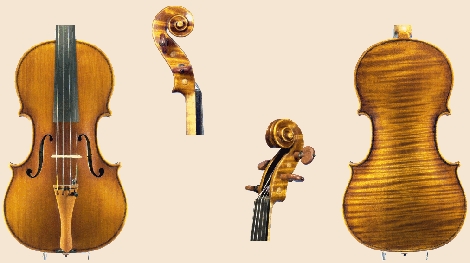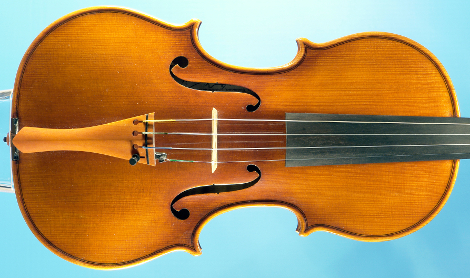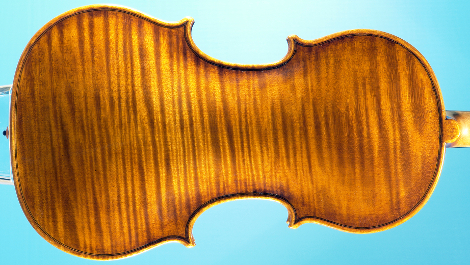NOTES ON WOOD TECHNOLOGY
Already while writing the latest article, I had the impression of giving a bit too much technical knowledge for granted , therefore I decided to write a new article trying to give some more indents so, even not technicians ones, could be able to understand everything in a proper way. At this point I called the graphic designer, with whom I work and asked him to make some drawings that could help me to expose the topic, and as I tried to explain him what he had to draw, I got the confirmation that this article is absolutely indispensable!

Carubelli Violin, Maestro Stefano Conia "The Young"
Before we get into the theme, I should express my thanks to Petra Zari, graphic artist for working needs and genetically a paintress for vocation, who did all illustrations of this post and for her patience.
And now let's focus on the main topic.
Pernambuco, as spruce and maple, have two types of fibers: longitudinal, i.e. that develops from the bottom upwards and transversal , running from the center towards the outside part of the trunk. And just these latter are very important for the sound wood.
Longitudinal fiber

The concentric circles that can be seen watching the cross section of a tree trunk are the real story board of the plant. The growth rings are indeed a real book for those equipped to read it. You can determine not only the age of the plant, but also the climate of the area where it grew up. Each climate change affects its growth, consequently, if at a certain point, the rings are very close, it means that the climate in those years was very hard and dry and the plant has grown at a slower pace. On the contrary, if they are large, it means that the climate was mild and rich in water. Not many people know, for example, that in addition to his great sensitivity and talent, Stradivari also had the great luck to work with a wonderful material. Approximately one hundred and fifty years before his birth, many parts of the world, including Central Europe, were interested with what is called the Little Ice Age, the extremely hard climate slowed the growth of spruces in Fiemme valley, consequent they developed a regular, close and very tense fiber. This wood was so exceptional that during '800 makers often dismantled the soundboard of instruments made by poorly known craftsmen and built a new one around it.

Carubelli Violin , soundboard
Obviously, when the trunk is cut into quarters the annual rings appear like many parallel lines, as the soundboard of violins, to be clearer. Both Pernambuco and spruce are used because the fibers of these woods are very tense and regular, and can optimally transmit the vibrations, even if they differ a lot.
Transversal fiber or medular rays

The transverse fibers or medullar rays , are the spinal cord of the plant. They grow radially from the center toward the outside part of the trunk, and the interweaving with the longitudinal fibers compose a real fabric. These fibers make the structure of the material thicker and significantly increase the mechanic and sound qualties. In the bow the medullar rays are especially useful for the structural strength of wood, because, considering the very small thickness, the sound increase is almost undetectable. On the other hand, in the instruments the transversal fiber, thanks to the shape of the soundboard, has an equal sound importance, maybe even greater than the longitudinal one.

Carubelli Violin , backside with visible thick medullar rays
Spruce and Pernambuco, are used for instruments and bows for their homogeneity, compactness, and the very high tension of the fibers, but the miracle that the nature made to create them can be damaged by those who cut these trees.
I wait for you next week as I am going to speak about wood cutting .
So long.
Paolo
External links :
http://www.petrazari.com/
http://www.coniailgiovane.com/index_eng.htm
http://www.wikipedia.org/
|
 
 |











